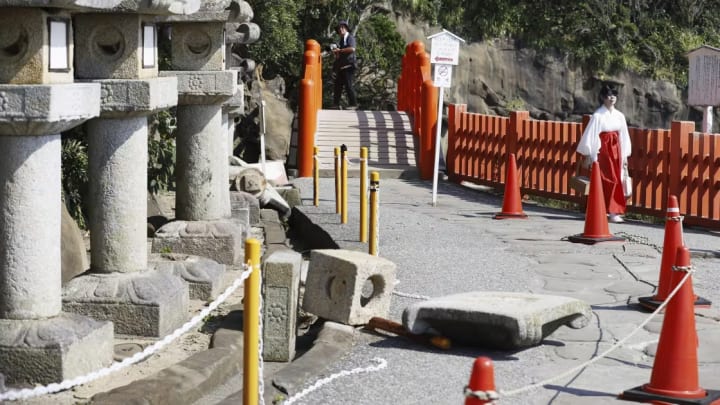Japan Issues Encouraging Update on 'Megaquake' Advisory After One Week

Japan was put on high alert last week after a 7.1 magnitude earthquake hit the southwest of the country. Because of the strong tremor on the Nankai Trough seabed zone, the first megaquake advisory was put in place.
The advisory wasn’t a predictive one, it was just a warning for residents to be prepared for what may come next. It was a warning that the chances were higher for a magnitude earthquake of at least 9.0 occurring in the area. They were urged to be prepared in case conditions worsened and evacuations were needed because of a quake and tsunami.
There are predictions in place between 70-80 percent that a Nankai Trough megaquake will occur sometime in the next 30 years. As shared by NBC News, the wreckage that a megaquake would cause would be catastrophic.
“The government’s worst-case scenario has estimated that a Nankai Trough megaquake and subsequent tsunami disaster could kill 323,000 people, destroy 2.38 million buildings and cause 220 trillion yen ($1.50 trillion) in economic damage.”
Luckily for everyone, that time to deal with a megaquake is not now. On Thursday, ended its megaquake advisory and residents can return to their normal everyday living as a result.
The megaquake advisory was triggered because of a 5.3 magnitude earthquake that occurred in eastern Japan near Tokyo had an epicenter Nankai Trough zone. Luckily this quake didn’t bring much destruction, as only three mild injuries were reported.
During the week that the advisory was in place, no abnormalities were reported to hint that another massive quake was going to occur. But, things were taken seriously enough that Prime Minister Fumio Kishida had a diplomatic tour that was going to span Central Asia and Mongolia canceled, with attention being turned to disaster management.
Arguably the most earthquake-prone country in the world, Japan unfortunately has experience with disasters. Back in 2011, a 9.0 earthquake triggered a tsunami that led to the infamous Fukushima nuclear disaster. More than 15,000 people perished in the horrible event.
About 1,500 earthquakes occur every year in Japan. Some are more fatal than others. On January 1st of this year, a 7.6-magnitude earthquake struck the northern coast of the Noto Peninsula, which is on the west coast of Honshu, Japan.
